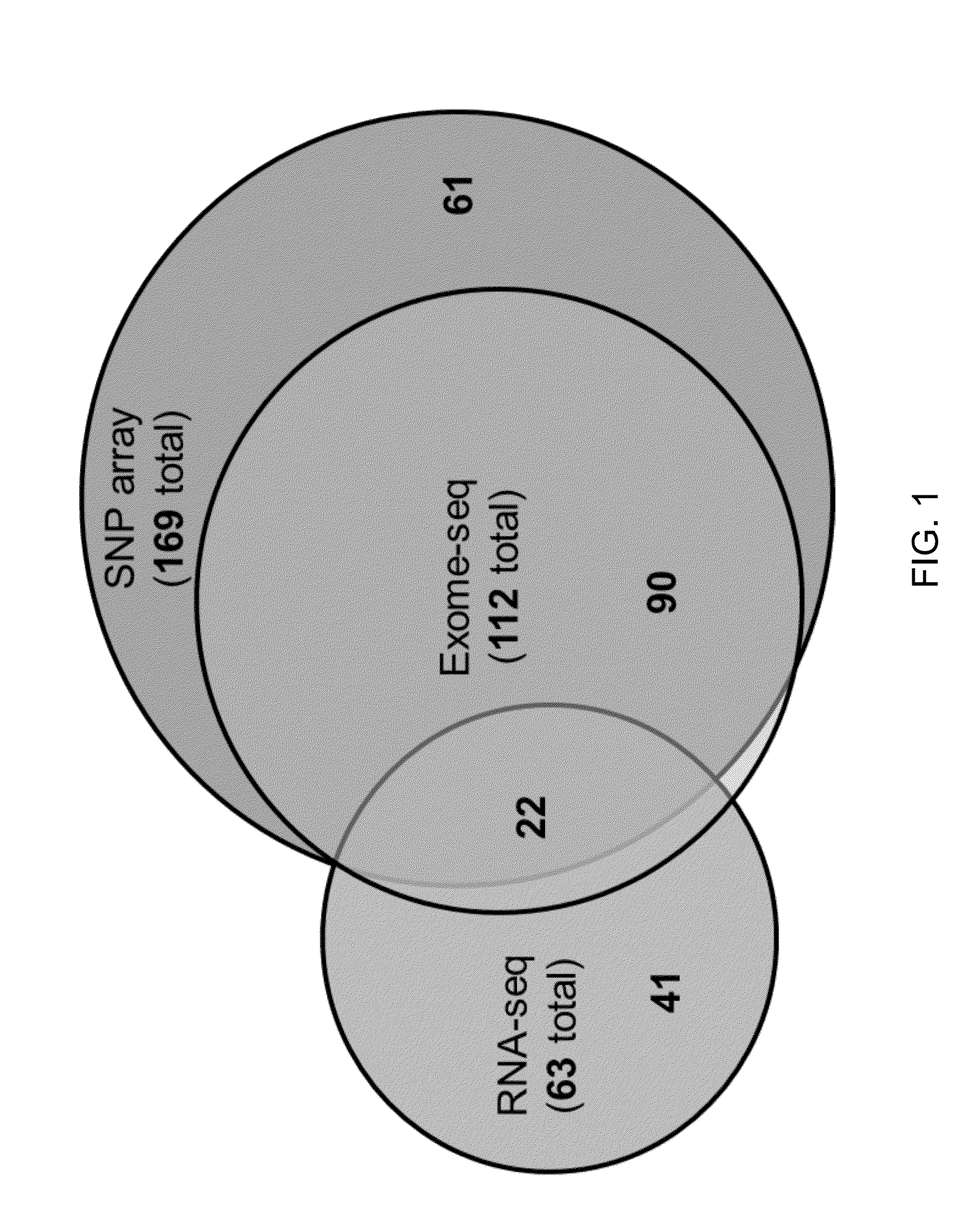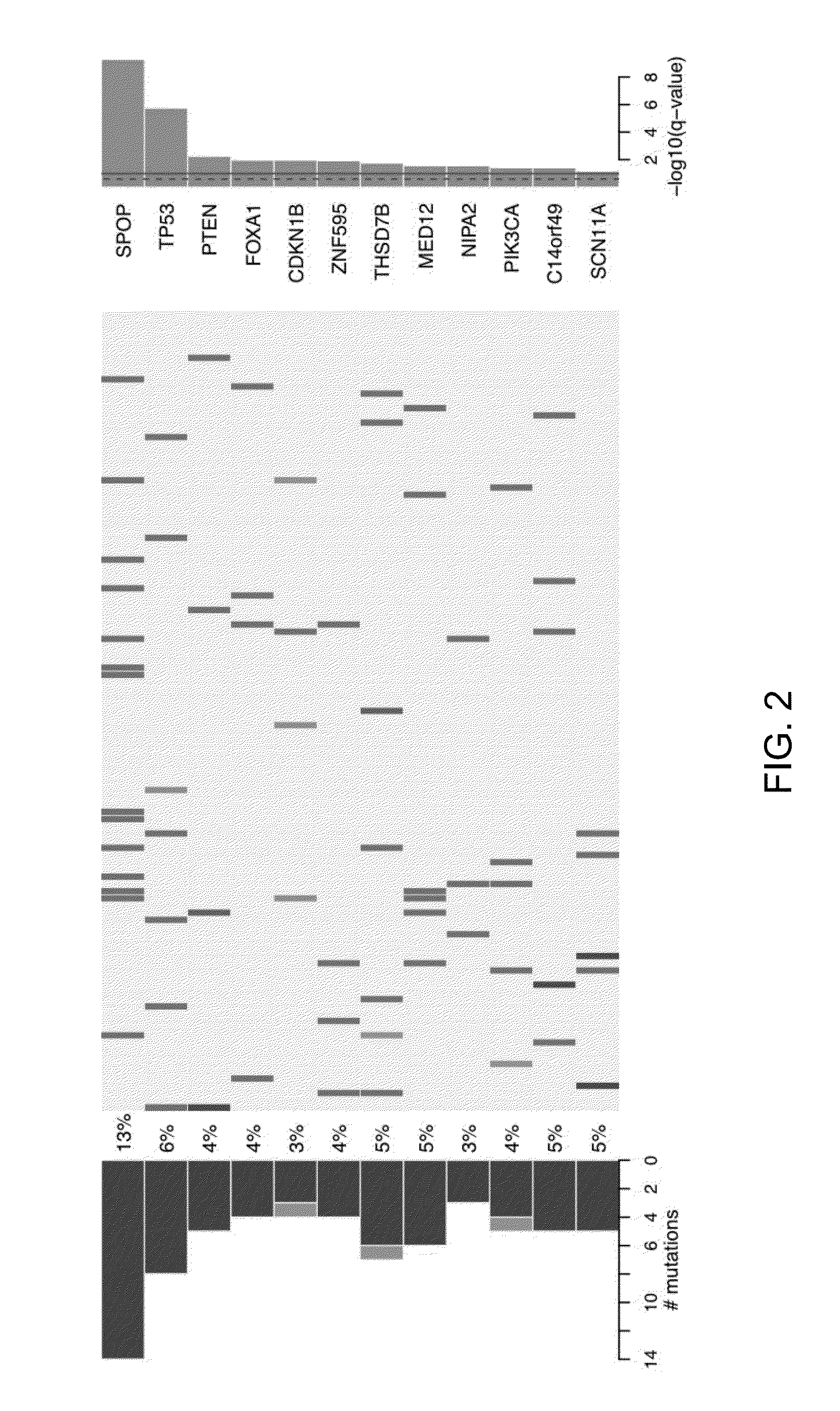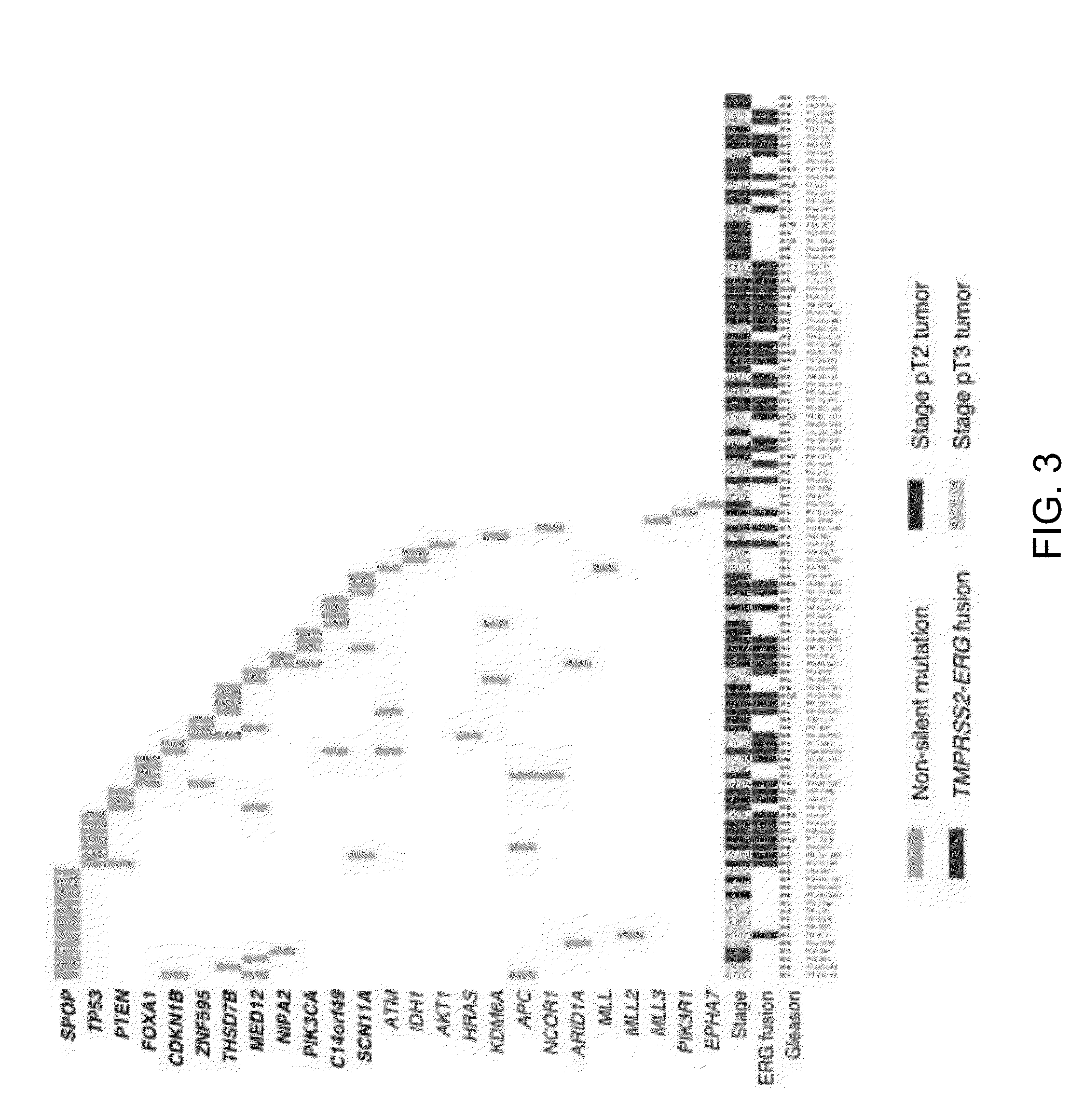Recurrent spop mutations in prostate cancer
a prostate cancer and mutation technology, applied in the field of new prostate cancer markers, can solve problems such as significant morbidity
- Summary
- Abstract
- Description
- Claims
- Application Information
AI Technical Summary
Benefits of technology
Problems solved by technology
Method used
Image
Examples
example 1
Mutational Spectrum of Primary Prostate Cancer
A. Materials and Methods
Description of Prostate Tumor Cohorts
[0040]Clinically localized primary prostate cancers were selected for exome- and transcriptome-sequencing from two cohorts: Weill Cornell Medical College (WCMC; New York, N.Y.) and Uropath (Perth, Australia), a commercial supplier of banked urological tissues. Patients were included only if they had not received previous treatment for prostate cancer, including radiation therapy, brachytherapy or hormone ablation therapy.
[0041]Tumors from the WCMC cohort were collected by the Institutional Biobank from patients undergoing radical prostatectomy by one surgeon for clinically localized prostate cancer. Patient-matched normal DNA was obtained from whole blood samples as described below for this cohort.
[0042]Tumors from the Uropath cohort were obtained from men undergoing radical prostatectomy for clinically localized prostate cancer across multiple medical centers in Western Austra...
example 2
SPOP is the Most Frequently Mutated Gene In Prostate Cancer
A. Materials and Methods
Identification of Significantly Mutated Genes
[0074]The MutSig algorithm from the Broad Institute was applied to identify genes that were significantly enriched for mutations as previously described (BERGER (2011), CHAPMAN (2011), C. I. G. A. R. Network (2011)) with two modifications. First, at most one mutation per gene was considered from each sample. Second, the observed number of silent mutations was used as a guide to the local background mutation rate. Briefly, MutSig identifies genes that harbor more mutations than expected by chance given sequence context and genic territory. Because certain base contexts exhibit increased mutation rates, such as cytosine in CpG dinucleotides, the context-specific mutation rates are considered for each class of mutation listed under “Determination of mutation rates” (Example 1.A above). Bases were considered sufficiently covered for calling substitutions if cov...
example 3
In Vitro Assessment of SPOP Tumorigenic Phenotype
A. Materials and Methods
SPOP wt and Mutant Plasmids
[0090]Wild-type SPOP was obtained from Origene (Rockville, Md.) with C-terminal myc and FLAG tags in a mammalian expression vector. SPOP-F133V was created by using the QuikChange II site-directed mutagenesis kit (Agilent). All plasmids were confirmed with Sanger sequencing, and protein expression was confirmed with Western blot using antibodies to SPOP, myc, and FLAG.
Cell Culture and Transfection
[0091]The human prostate cancer cell lines 22Rv1, and DU145 and the benign prostate cell line RWPE were obtained from the American Type Culture Collection (Manassas, Va.). The 22Rv1 and DU145 cells were maintained in RPMI 1640 (Invitrogen) supplemented with 10% fetal bovine serum (FBS) and penicillin / streptomycin. RWPE cells were maintained in Keratinocyte-SFM (Invitrogen) supplemented with human recombinant Epidermal Growth Factor and Bovine Pituitary Extract (BPE).
[0092]For siRNA transfectio...
PUM
 Login to View More
Login to View More Abstract
Description
Claims
Application Information
 Login to View More
Login to View More - R&D
- Intellectual Property
- Life Sciences
- Materials
- Tech Scout
- Unparalleled Data Quality
- Higher Quality Content
- 60% Fewer Hallucinations
Browse by: Latest US Patents, China's latest patents, Technical Efficacy Thesaurus, Application Domain, Technology Topic, Popular Technical Reports.
© 2025 PatSnap. All rights reserved.Legal|Privacy policy|Modern Slavery Act Transparency Statement|Sitemap|About US| Contact US: help@patsnap.com



